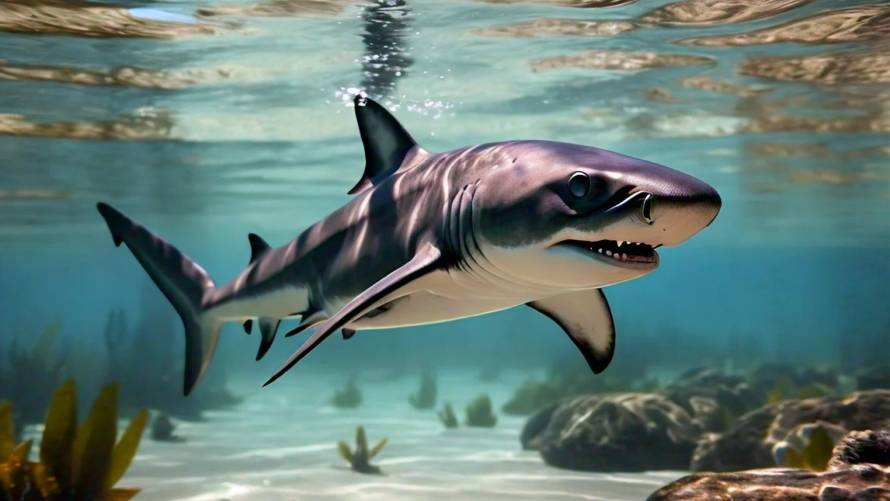Marine scientists have discovered that juvenile great white sharks, also known as “pups,” select warm and shallow waters within one kilometer of the shore to congregate. The findings, published in Frontiers in Marine Science, shed light on the behavior of these young sharks and have important implications for their conservation and public safety, especially as ocean temperatures rise due to climate change.
Nurseries Off Central California: A Unique Gathering Place for Juvenile Sharks
The study focused on a population of great white shark pups and juveniles off Padaro Beach near Santa Barbara, California. Unlike other locations, these young sharks gather in “nurseries” without the presence of adults, making it an ideal site for studying their behavior and environmental preferences.
“This is one of the largest and most detailed studies of its kind. Because around Padaro Beach, large numbers of juveniles share near-shore habitats, we could learn how environmental conditions influence their movements,” said senior author Dr. Christopher Lowe, a professor at California State University.
Tracking Juvenile Sharks: A High-Tech Approach
In 2020 and 2021, Lowe and his team tagged 22 juvenile great white sharks, both males and females aged between one and six years old, with sensor-transmitters. These devices measured water pressure and temperature in real-time and tracked each shark’s position using acoustic “pings” sent to an array of receivers along the shoreline.
The researchers also gathered data on the temperature distribution throughout the local water column using an autonomous underwater vehicle and trained a 3D model of the juveniles’ temperature and depth preferences using artificial intelligence.
The results revealed that juvenile great white sharks actively adjust their vertical position in the water column to stay within a temperature range of 16 to 22 °C (60.8 to 71.6 °F), preferably between 20 and 22 °C (68 to 71.6 °F). This may be their optimal range for maximizing growth efficiency within the nursery.
“Our results show that water temperature is a key factor that draws juveniles to the studied area. However, there are many locations across the California coast that share similar environmental conditions, so temperature isn’t the whole story. Future experiments will look at individual relationships, for example to see if some individuals move among nurseries in tandem,” said first author Emily Spurgeon, a former master’s student and current research technician in Lowe’s team.
Implications for Conservation and Public Safety
The study’s findings are crucial for the conservation of great white sharks, especially as ocean temperatures continue to rise due to climate change. Understanding the factors that influence juvenile shark behavior can help inform management strategies to protect these vulnerable populations.
Additionally, knowing that juvenile great white sharks prefer shallow waters near shore is important for public safety, as it can help reduce the risk of negative shark encounters.
If our reporting has informed or inspired you, please consider making a donation. Every contribution, no matter the size, empowers us to continue delivering accurate, engaging, and trustworthy science and medical news. Independent journalism requires time, effort, and resources—your support ensures we can keep uncovering the stories that matter most to you.
Join us in making knowledge accessible and impactful. Thank you for standing with us!

